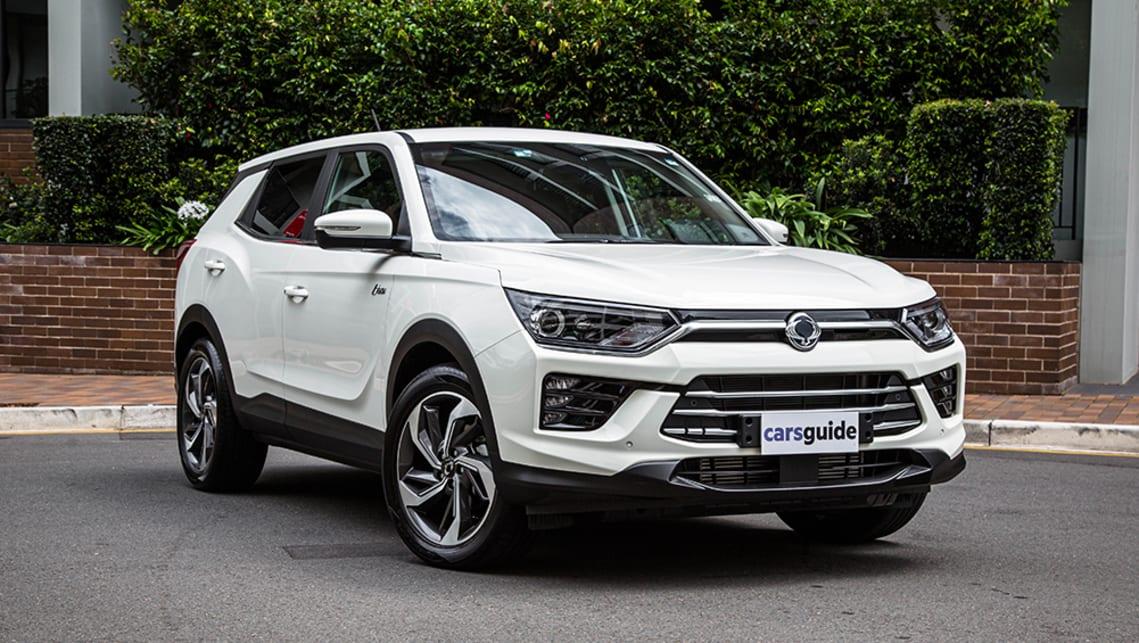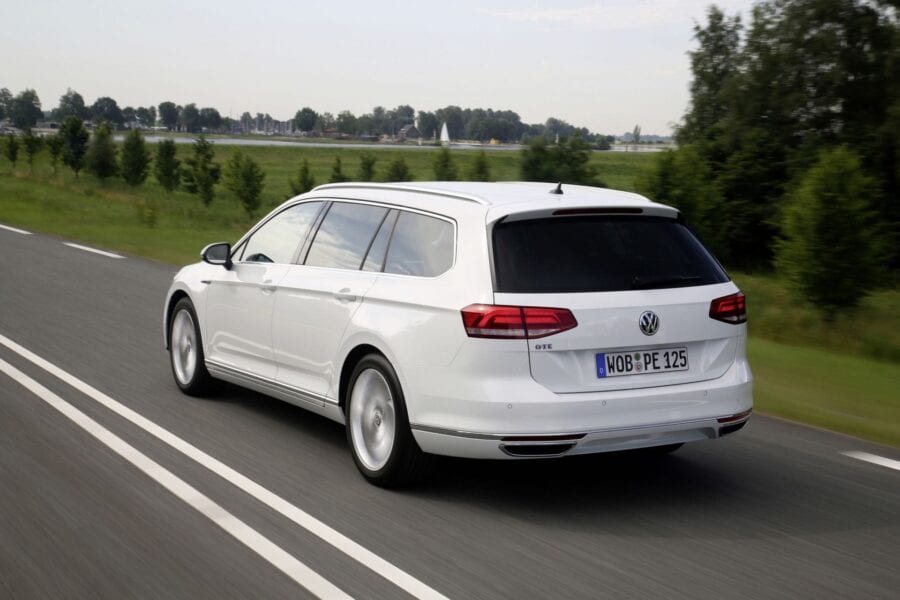
Review of SsangYong Korando 2020: Ultimate
Content
- Is there anything interesting about its design? 7/10
- How practical is the interior space? 6/10
- Does it represent good value for money? What functions does it have? 8/10
- What are the main characteristics of the engine and transmission? 7/10
- How much fuel does it consume? 6/10
- What is it like to drive? 7/10
- What safety equipment is installed? What is the safety rating? 8/10
- How much does it cost to own? What kind of guarantee is provided? 10/10
- Verdict
Mid-size SUVs are all the rage right now, and every brand wants you to buy one, including SsangYong, which has a Korando. So how is SsangYong and is Korando good compared to say Kia Sportage, Subaru XV or Hyundai Tucson and why do they all have such stupid names?
Well, I can't explain the names, but I can help with the rest because not only have I tested these cars, but I've just driven the new Korando in the Ultimate class, which is at the top of the range. if the name hasn't already issued it.
| Ssangyong Korando 2020: Ultimate | |
|---|---|
| Safety Rating | |
| engine's type | 1.5 L turbo |
| fuel type | Regular unleaded gasoline |
| Fuel efficiency | 7.7l / 100km |
| Landing | 5 Places |
| Price from | $26,700 |
Is there anything interesting about its design? 7/10
Heck, yes, and it's interesting in a good way, unlike the previous Korando, which was also interesting to watch, but for all the wrong reasons, with its clunky and outdated style. Yes, it's amazing what money can do, and by that I mean Indian company Mahindra's purchase of the Korean brand SsangYong in 2011. A few years later, we saw the arrival of the next-generation Rexton large SUV and the Tivoli small SUV with strikingly good looks.
Korando has a premium appearance.
The all-new Korando arrived at the end of 2019, and its appearance has become much more attractive. A tall, flat bonnet, a serious face with sleek headlights and bladed lower grille, and sharp creases trailing down the car and up to the muscular wheel arches. And then there's the tailgate, which is either pretty enough to wear an Alfa Romeo badge, or busy and over the top, depending on who you ask. In any case, Korando has a much more refined and prestigious appearance than the previous model.
The Korando I tested was a top notch Ultimate and had some styling differences from the rest of the line such as 19" wheels which are the largest in the line, rear privacy glass, sunscreen. roof and LED foglights.
Korando Ultimate is equipped with 19-inch alloy wheels.
While the exterior looks excellent, the interior design is less convincing in its style and quality. The tall dashboard, for example, has prestigious aspirations for a continuous line of trim that runs from door to door, but the execution falls short because the fit and finish is not as good as it needs to be to achieve this feat.
In addition, there are slightly odd design elements, such as the compressed steering wheel shape (I'm not kidding, look at the pictures) and expanses of glossy black plastic.
Compared to the exterior, the interior design is less convincing in its style and quality.
While it's a comfortable seat, the interior design and craftsmanship is nowhere near as good as the interior of a Subaru XV or even a Hyundai Tucson or Kia Sportage.
The Korando is classified as a midsize SUV, but it's small for its class. Well, its dimensions are 1870mm wide, 1620mm high and 4450mm long. This places it in a kind of gray area between small and mid-sized SUVs. You see, the Korando is about 100mm longer than the Kia Seltos and Toyota C-HR, which are small SUVs, while the Hyundai Tucson and Kia Sportage are about 30mm longer, which are midsize SUVs. The Subaru XV is the closest, only 15mm longer than the Korando, and it counts as a small SUV. Embarrassed? Then forget the numbers and let's look at the space inside.
How practical is the interior space? 6/10
Salon Korando in the images looks small, because. Admittedly, at 191 cm tall and with a wingspan of two meters, I find most houses too small for me, let alone cars.
So, even though the horizontal lines on the dash tried to trick my brain into thinking the cockpit was wider than it really was, my body was telling me a different story. Although it is not as crowded as in the back seat. I can just sit in my driver's seat so that there is a finger's width between my knees and the back of the seat.
It's not good for the class. I have more space in Subaru XV and Hyundai Tucson. As for headroom, it's not bad thanks to the high and flat roofline.
The Korando has a load capacity of 551 liters and if, like me, you can only imagine two liters at a time because that's the amount of milk, then take a look at the pictures and you'll see big, shiny Cars Guide suitcase fits without any drama.
Storage space in the cabin is good, with two cup holders up front and a deep bin in the center console with a tray in the back for second-row passengers. Those in the back also have two cupholders in the fold-down middle armrest. All doors have large bottle pockets.
A single USB port (front) and three 12V outlets (front, second row, and trunk) are frustrating for a modern SUV.
Does it represent good value for money? What functions does it have? 8/10
The name probably gives it away, but the Ultimate is the top-of-the-line Korando, and that also makes it the most expensive, although the petrol version I tested costs $3000 less than the diesel version with its $36,990 list price.
The list of standard features is impressive and includes an 8.0-inch touchscreen, Apple CarPlay and Android Auto, a six-speaker stereo system, leather upholstery, heated and ventilated front seats, dual-zone climate control, a 10.25-inch digital instrument display, and a heated steering wheel. steering wheel, power tailgate, rear privacy glass, proximity key, puddle lights, sunroof, auto-folding mirrors and 19-inch alloy wheels.
The 8.0-inch touchscreen comes with Apple CarPlay and Android Auto.
You get a lot of equipment there, but you also pay $37 without travel expenses. The top-of-the-line Subaru XV 2.0iS is $36,530, the Hyundai Tucson in the Active X class is $35,090 and the Kia Sportage SX+ is $37,690. So, is this a great value? Not outrageously great, but still good.
What are the main characteristics of the engine and transmission? 7/10
The Korando Ultimate comes with a diesel engine, but the tested version had a 1.5-liter turbocharged four-cylinder petrol engine. Diesel is a safer option if you plan to tow a motorhome or trailer because it has the best towing braking capacity of 2000kg.
However, the 1500kg braked petrol tractor is still big for its class and the engine power is 120kW and 280Nm, which is also a good performance compared to its competitors. Transmission is a six-speed automatic.
The 1.5-litre four-cylinder turbocharged petrol engine develops 120 kW/280 Nm.
All Korandos are front-wheel drive only, but 182mm of ground clearance is better than a regular car, but I wouldn't get more adventurous than a smooth, well-groomed dirt road.
How much fuel does it consume? 6/10
SsangYong says the Korando's 1.5-liter turbo-petrol four-cylinder should consume 7.7 l/100 km after a combination of open and city driving.
In testing, it took 7.98 liters of premium unleaded gasoline to fill a 47-liter tank after 55.1 km on urban and suburban roads, which is 14.5 l/100 km. If you live in a city this will probably be similar to your usage too, but add motorways and that figure drops by at least a few litres.
Also keep in mind that Korando runs on premium unleaded gasoline.
What is it like to drive? 7/10
First impressions? The sound of the indicator is loud and fully corresponds to the arcade game of the 1980s; the armrest of the center console is too high; the headlights are dim at night, and the low-light rear-view camera image looks a bit like Blair Witch Project (look and be horrified if you don't get a reference).
These are not very good things, but there is a lot more that I liked during the week. The ride is comfortable; body control is great without any of the SUV wobble that some of its rivals tend to overcome speed bumps; visibility around is also good - I liked how the tall, flat bonnet makes it easy to see how wide the car is in tight spaces.
As for the engine, it felt responsive enough for overtaking, and the transmission, while shifting a bit slowly at times, was smooth. The steering is light and the 10.4m turning radius is good for the class.
This is a light and easy to drive SUV.
Warranty and safety rating
Basic Warranty
7 years / unlimited mileage
guarantee
ANCAP Safety Rating
What safety equipment is installed? What is the safety rating? 8/10
The SsangYong Korando received a maximum five-star ANCAP rating during testing in 2019, earning good scores in impact testing for adult and child protection, but not as high for pedestrian detection or the effectiveness of advanced safety equipment.
However, the Korando Ultimate has an impressive array of safety technologies, including AEB, lane keep assist and lane departure warning, blind spot warning, rear cross traffic alert, lane change assist and adaptive cruise control. control.
This is in addition to seven airbags, front and rear parking sensors and a rear-view camera.
For child seats, you'll find three top cable points and two ISOFIX anchorages in the back row. My five year old's seat fit easily and I was more than happy with its level of rear security during my week with the Korando.
I was not happy with the lack of a spare wheel. There is an inflation kit under the trunk floor, but I'd rather have a spare (even to save space) and lose some of the trunk.
How much does it cost to own? What kind of guarantee is provided? 10/10
The Korando is backed by SsangYong's seven-year, unlimited-mileage warranty. Service is recommended every 12 months or 15,000 km, and for the petrol Korando, prices are capped at $295 for each of the first seven regular services.
Verdict
There is a lot to like about Korando Ultimate. It has advanced safety technology and a five-star ANCAP rating, more features than its similarly priced competitors, and it's comfortable and easy to drive. The downsides boil down to the fact that the fit and finish of the interior isn't up to the same high standard as its competitors, while you also get a "smaller car for the price" compared to the size of those rivals.
